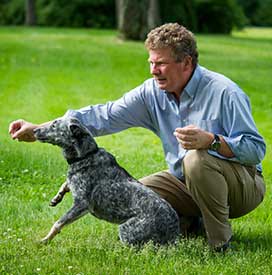In wake of outbreaks, Parrish offers tips on parvovirus

Recent outbreaks of canine parvovirus in Massachusetts, New Jersey, Indiana, and elsewhere in the US have left shelters and veterinarians struggling to contain the virus and prevent further spread. Cornell University Media Relations has turned to Baker Institute director, Colin Parrish, for a list of tips for dog owners.
“Vaccination is the first thing you must do to protect your dog," says Parrish in the release. "The virus is quite widespread, and because it is relatively resistant to disinfection efforts, it can infect puppies that are isolated from other dogs."
The Baker Institute has a long history of working to prevent and treat canine parvovirus infection. The virus first emerged in the United States, Europe, Asia and Australia in 1978, and within two years it had spread worldwide, killing thousands of dogs and possibly infecting millions more. Baker Institute scientists, including Drs. Leland Carmichael and Max Appel, first isolated the virus later that same year, and by 1979 had developed the first vaccine for parvo. By 1981, Baker Institute scientists had created an improved attenuated vaccine for the disease. Today, Parrish continues to study the virus and its evolution in order to determine whether existing vaccines provide adequate protection from modern strains of CPV.


